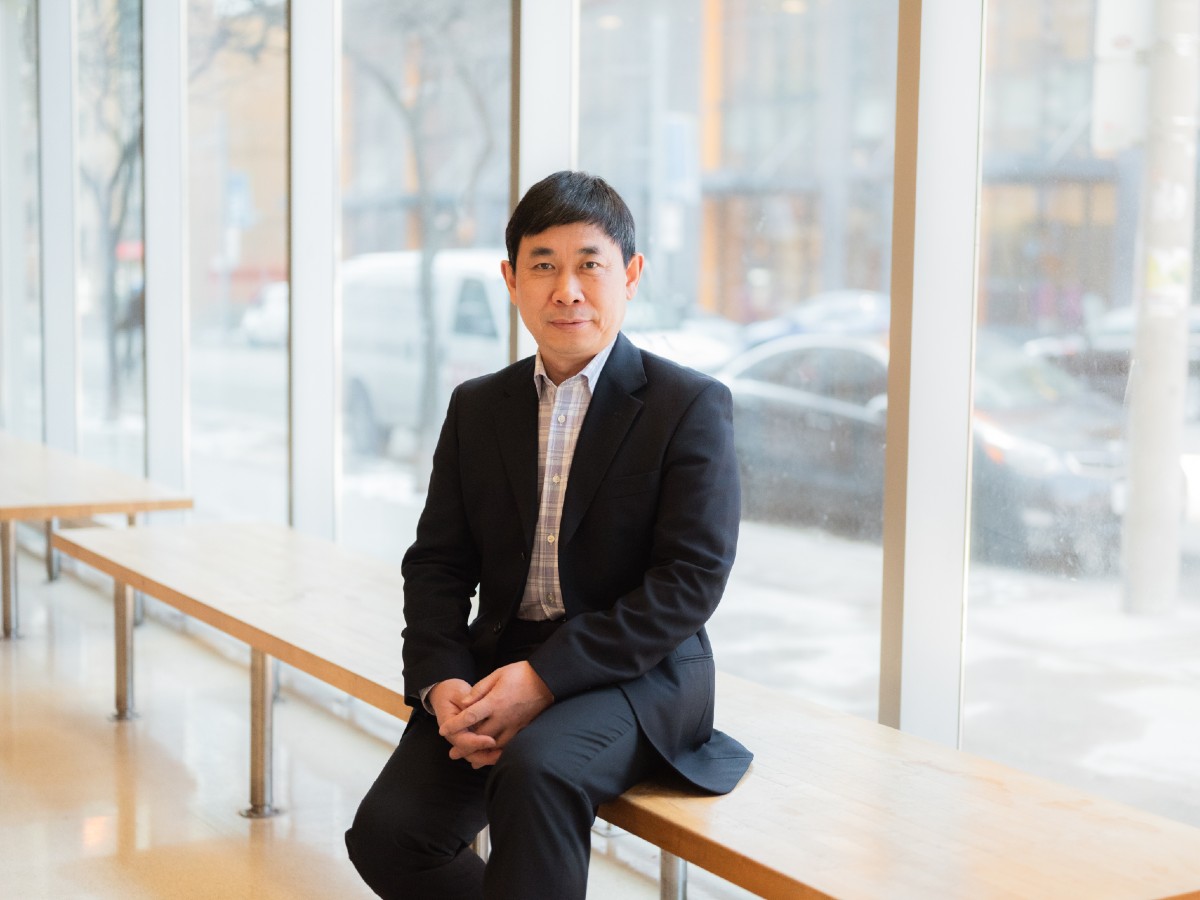Applying computer vision in many ways
Professor Richard Wang brings extensive computer vision experience to solve complex problems

Ask computer science professor Richard Wang for a handful of recent projects, and they each sound different, proof that his research on computer vision can have wide applications. Computer vision is a type of artificial intelligence that uses machine learning to teach computers to learn from digital images, videos, and other visual inputs.
For example, Wang has teamed up with SOTI Aerospace to create smart small drones tailored for indoor use, such as warehouses. Leveraging computer vision techniques, they aim to help the drone understand its environment, localize itself, and detect obstacles in its path. “Indoor autonomous navigation is a very challenging problem, primarily because of cluttered backgrounds and the lack of GPS signals. Computer vision techniques offer the most effective solution for the drone to safely navigate to its destination without collision,” he explains.
In another endeavour, Wang is collaborating with local company i-50 to design an AI co-pilot to enhance manufacturing processes. They are designing a novel self-supervised learning technique capable of training the model from minimal data to autonomously oversee assembly lines for quality control. This adaptable model can be seamlessly implemented across various manufacturing settings, resulting in substantial savings. Yet another collaboration with VCycene, a company that has created an eco-friendly kitchen composter, helps to transform food waste into organic compost. Wang is developing AI tools to allow users to assess the nutrient composition of the generated compost, providing valuable insights for optimizing gardening practices. All three projects are jointly supported by industry partners and the National Science and Engineering Research Council (NSERC).
While Wang notes that his primary research program is centred around computer vision and image processing, most of his current research uses machine learning, particularly deep learning techniques. This shift is driven by the potent representation capabilities of neural networks and the surging interest in artificial intelligence (AI). Collaborating with his students, Wang is actively engaged in developing new neural network models to solve intricate real-world problems through visual information. “A decade ago, computer vision was a niche field with limited familiarity among the public. But today, we are surrounded by numerous successful practical applications of this technology in our daily lives,” he says.
Wang also applies computer vision in robotics, self-driving, precision agriculture and medical image analysis.